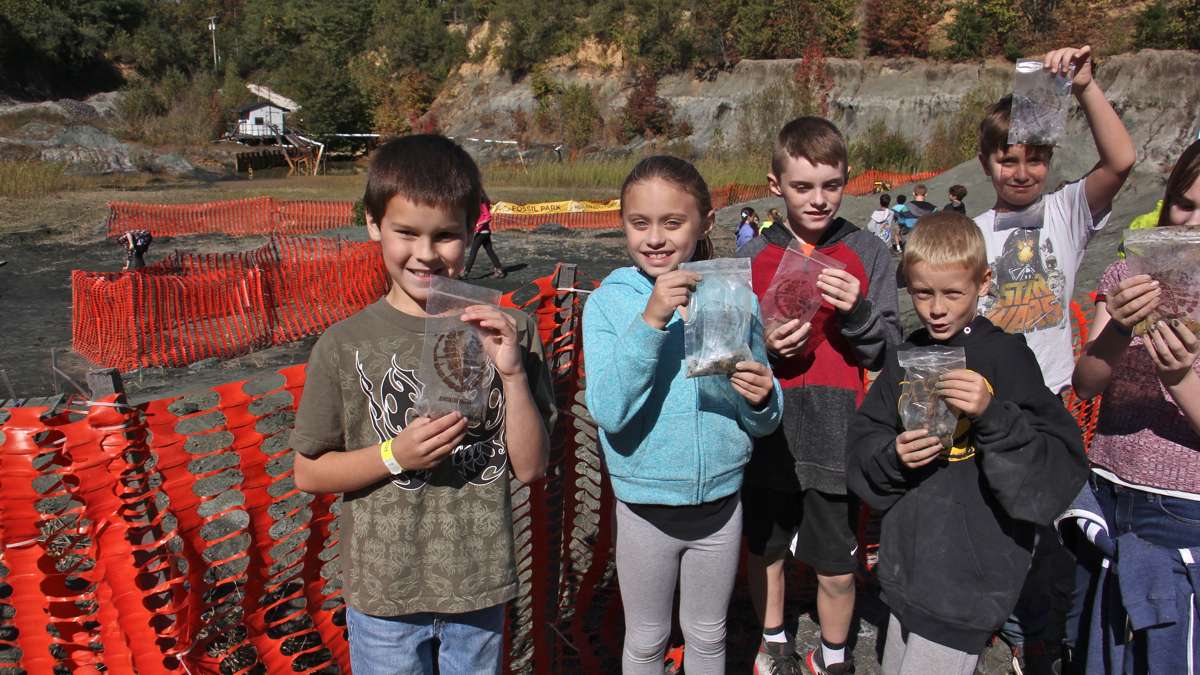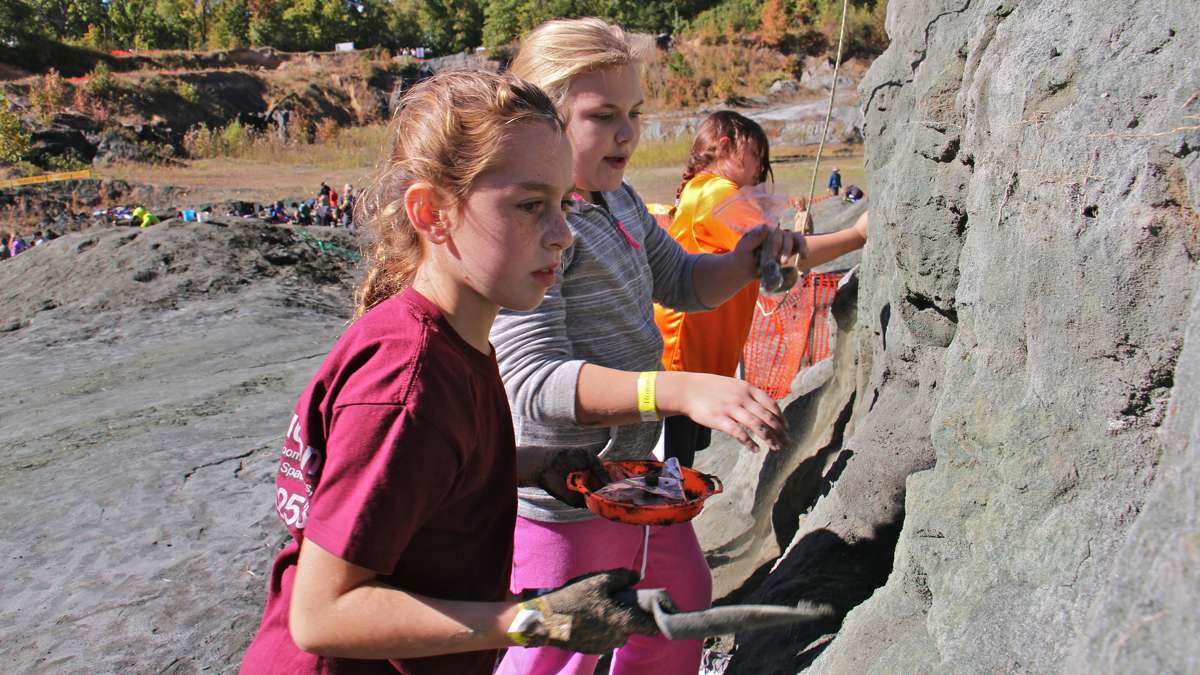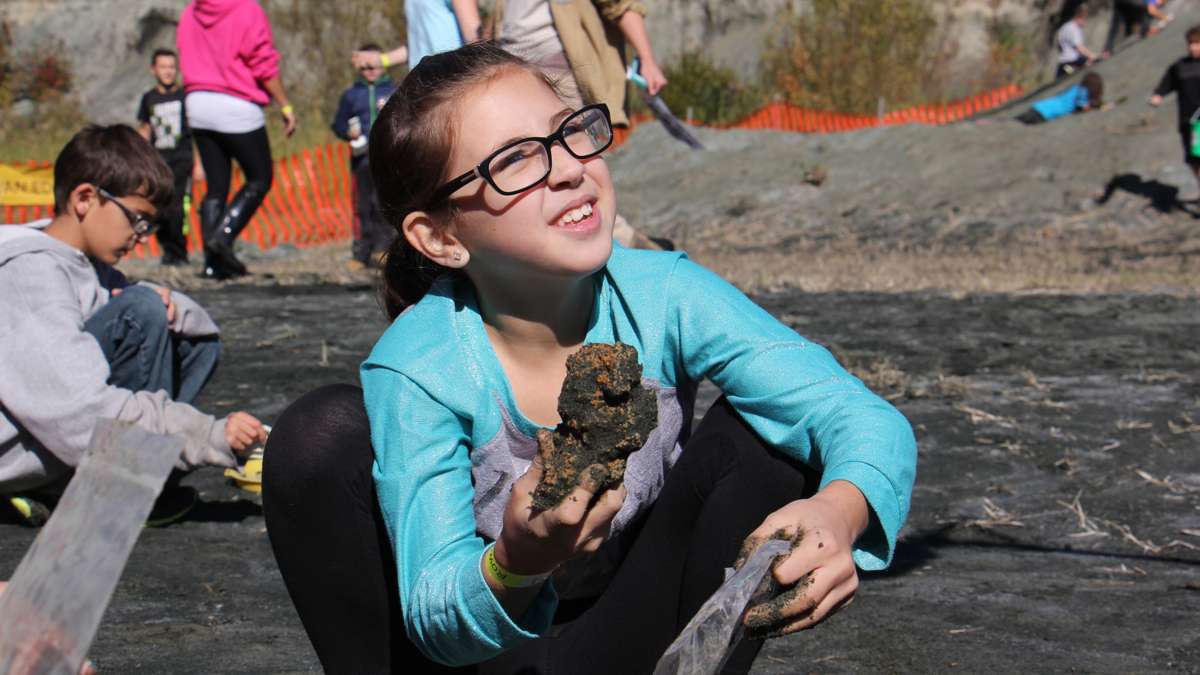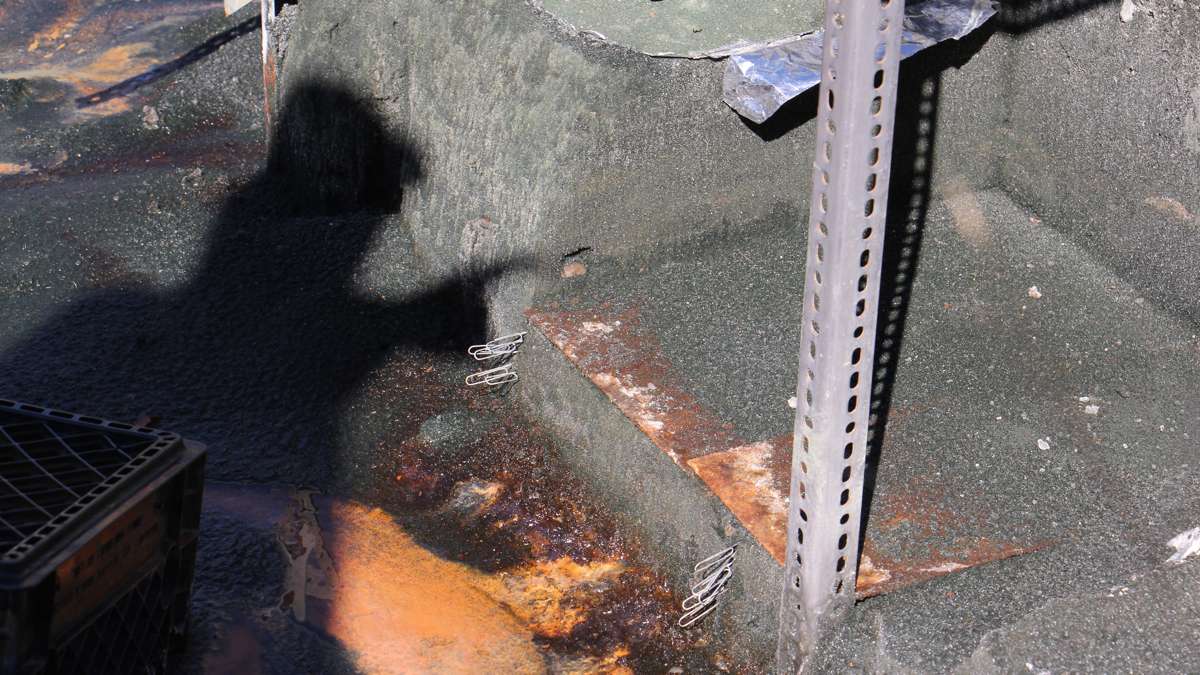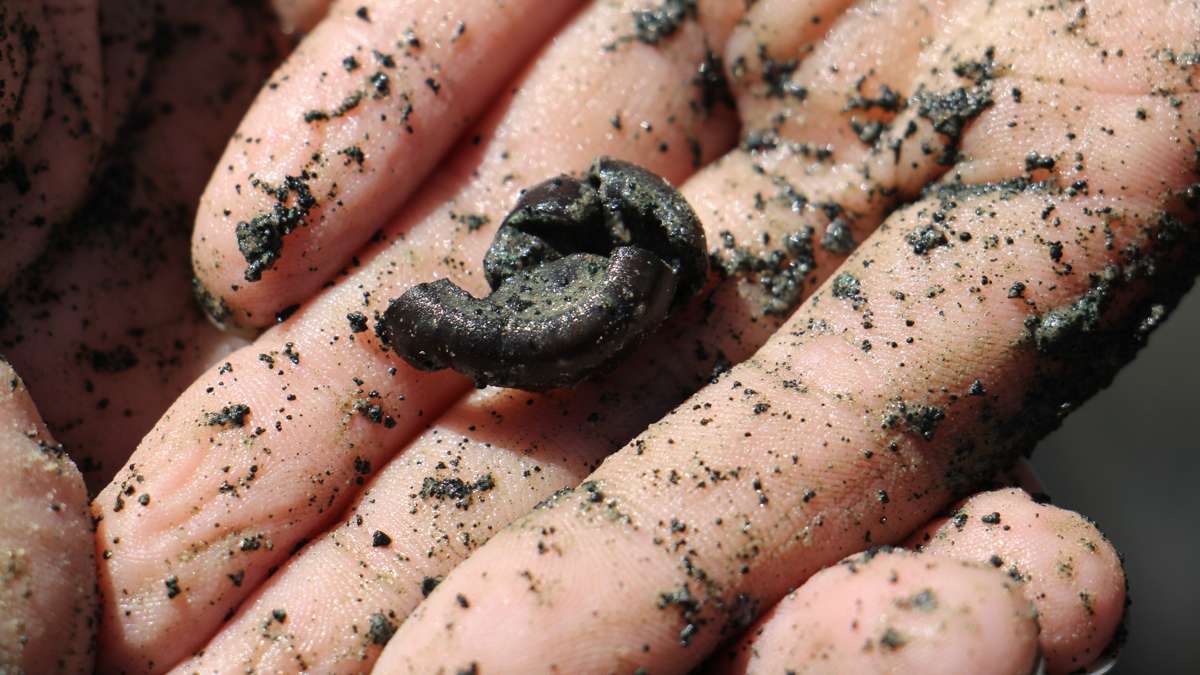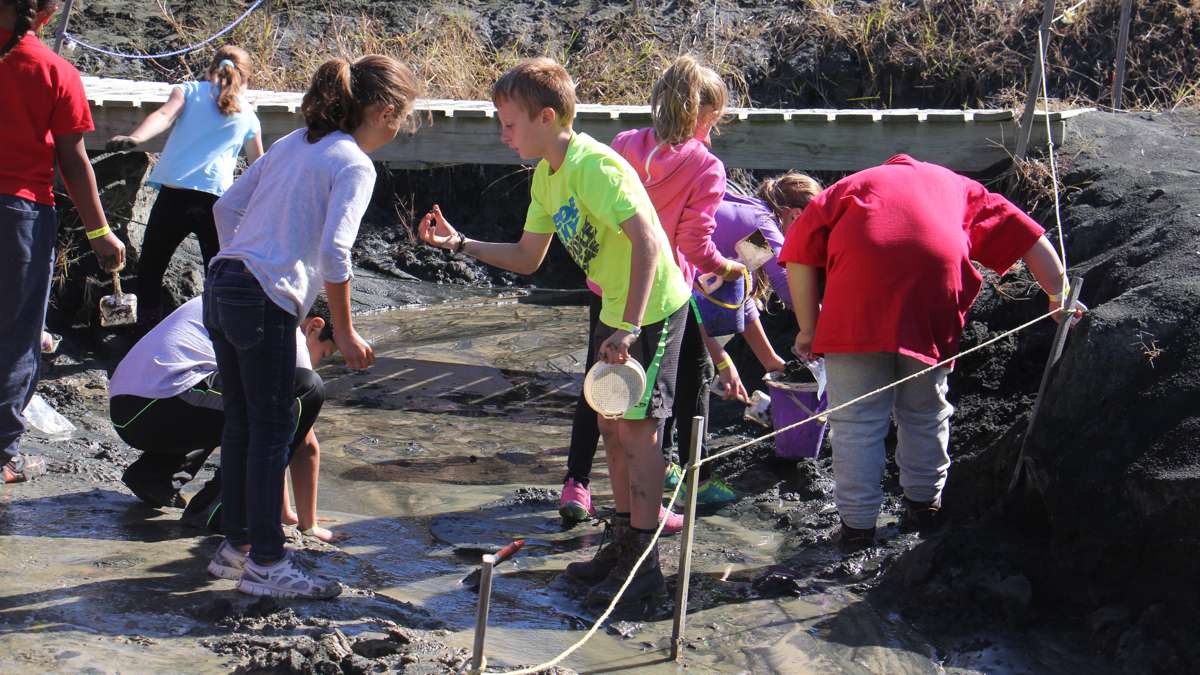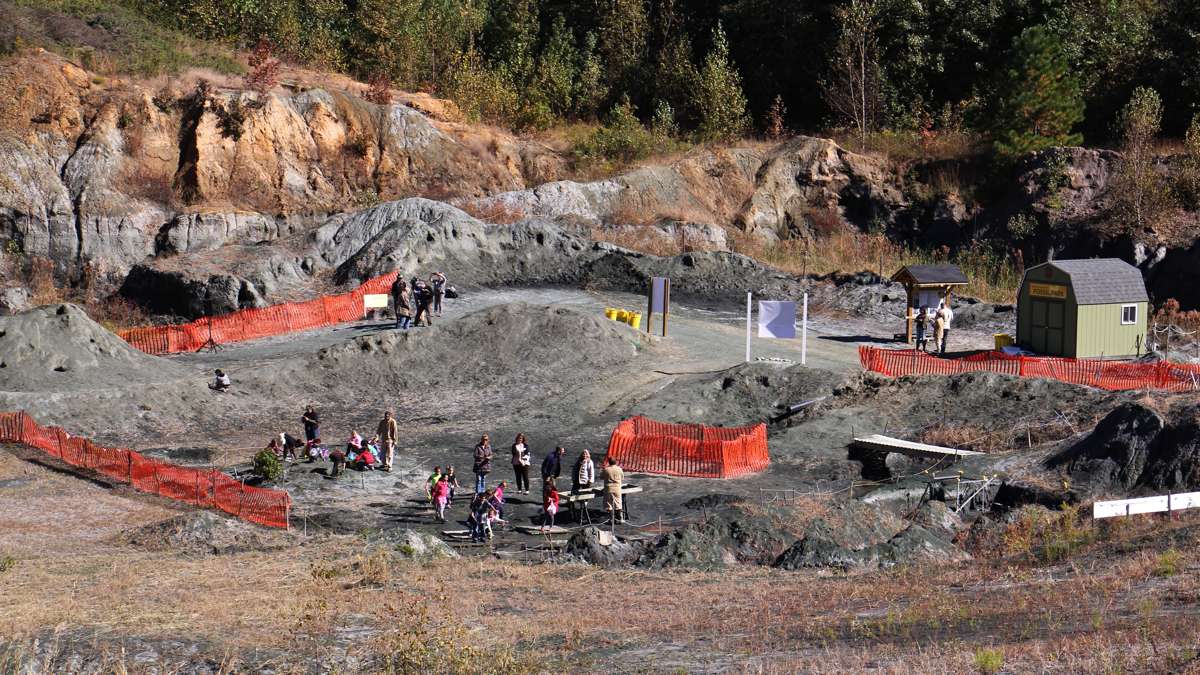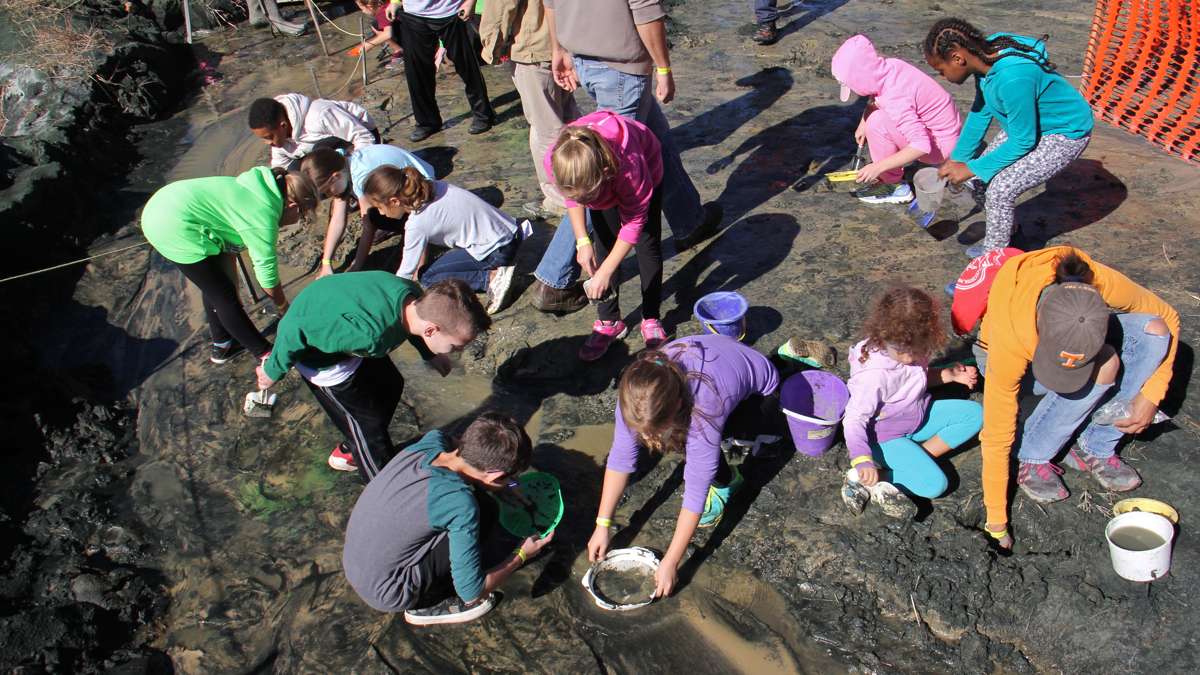Rowan gets $25 million to turn 60 million-year-old South Jersey dig site into fossil park
ListenSpencer Albano cannot contain his excitement, and no one can blame him.
“I’ve got my shovel ready, and I’m ready to go!” he said.
Before he can finish his sentence, he and several dozen other fourth graders from the Mantua Township School district charge into muddy piles of dark sand and dirt.
They’re on a fossil dig. A real one.
And at the end of the hour, they get to keep whatever bounty they discover. That could be anything from week’s old bacteria “poop” to shells and other remnants of ancient sea creatures.
“Every kid that comes here who, tries a little bit and who isn’t afraid to get their hands dirty, is going to find a 65-million-year-old fossil with their own hands that they get to take home,” said Ken Lacovara, dean of Rowan University’s School of Earth and Environment, standing nearby on a recent Friday morning.
Welcome to Rowan University’s fossil quarry.
The university bought the 65-acre site, conveniently located behind a shopping center in South Jersey, for $1.95 million last year. Lacovara, a paleontologist widely known for his recent discovery of a massive dinosaur in South America (affectionately named Dreadnoughtus), has known for years that this old mining quarry contains millions of 65-million-year-old fossils from the Cretaceous Period.
Since 2012, he has been leading community digs, as well as investigating his own hypothesis: that this ancient pit, the one where Albano and other 9-year-olds are having the time of their life right now, contains unique clues into the period, even the day, that wiped out dinosaurs tens of millions of years ago.
That’s because within the deeper layers of this quarry, Lacovara identified a “death assemblage” of largely intact sea turtles, bony fish, sharks, crocodiles and mosasaurs. He is trying to prove all of these creatures died at once.
As one might imagine, the list to check this place out is long. But resources are limited.
“Right now, we have a waiting list of 200 school groups that would like to visit,” he said.
When registration opened in September for Lacovera’s once-a-year community dig, the some 2,000 slots fill up within 20 minutes.
On Monday, the university announced a donation of $25 million from alumni Jean and Ric Edelman, who met while at Rowan, to preserve and expand the site.
The money will be used to turn the site into a hands-on research and education park. Plans over the next few years include building a museum, visitor center, fossil preparation lab, nature trail and paleontology-themed playground. The target open date is 2020.
The gift is Rowan’s largest from any university alumni, and the second largest contribution to the university in general. (Namesake Henry Rowan gave $100 million to what had been Glassboro State University to transform it and it was renamed for him.)
The two said they were looking to support something that would have a measurable impact on people’s lives.
“This park is unlike anything else in the country. It’s certainly unique east of the Missisippi and it has tremendous opportunities to get children in particular excited about science and engineering,” said Ric Edelman. “It’s within a day’s drive of over a third of the U.S. popoulatin, so its accessiblity is astonishing.”
He and Jean Edelman founded Edelman Financial Services in 1987, one of the largest financial planning and investment management companies in the country.
Lacovara, a Jersey native who caught the geology bug at a Boy Scout meeting as a kid, said the point isn’t necessarily to train thousands and thousands of future vertebrate paleontologists.
“The goal is to open up avenues into STEM (Science, Technology, Engineering, Mathematics) education and STEM disciplines for students. Because lots of research shows that two of the most predictive factors that determine whether students go on to enjoy a career in STEM disciplines are early exposure to fields and exposure to STEM scientists,” he said. ” And so students can come here and see science as a process, and they can see that science is done by people, and they can look at themselves and say ‘hey I’m a people, and maybe I can do it too.'”
WHYY is your source for fact-based, in-depth journalism and information. As a nonprofit organization, we rely on financial support from readers like you. Please give today.







